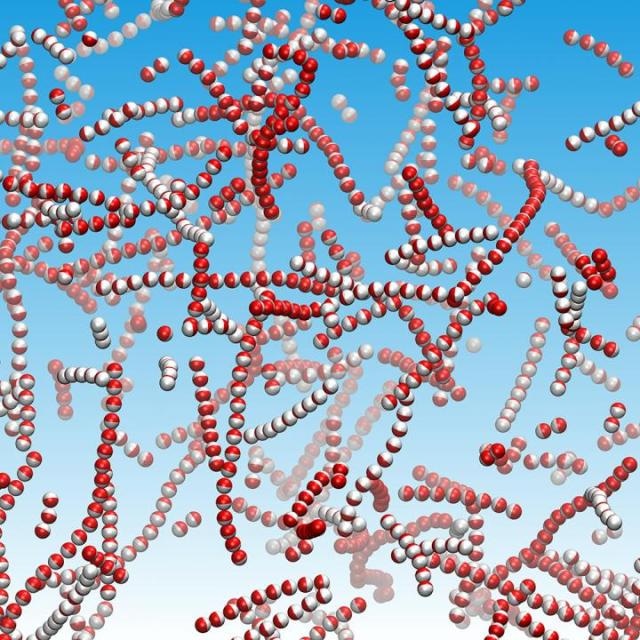Jul 12 2016
Spanning from swarming bees to clustering bacteria colonies, nature amazes with its ability to self organize and execute joint, dynamic behaviors. Researchers have recently discovered a method to imitate these behaviors in active materials at microscale by modifying only one parameter.
 Janus colloids with equal-and-opposite charges attract one another into connected, dynamic chains. (Credit: Ming Han)
Janus colloids with equal-and-opposite charges attract one another into connected, dynamic chains. (Credit: Ming Han)
Northwestern Engineering’s Erik Luijten and Steve Granick of Korea’s Institute for Basic Science (IBS) and Ulsan National Institute of Science and Technology showed control over the interactions occurring among microscopic spheres, which made them to self-propel into chains, swarms, and clusters. These types of active particles have the potential to pave the way to a new class of technologies that will find use in chemistry, medicine, and engineering. It will also advance basic understanding of scientists regarding joint, dynamic behavior in systems.
We have identified the minimal ingredients needed for all these different behaviors. Now we can change how this dynamic system moves.
Erik Luijten, Professor, Northwestern Engineering
“We are taking small steps toward encouraging lifelike behavior in materials,” said Granick, who directs the IBS Center for Soft and Living Matter. “We are already beginning to see that active materials can behave intelligently.”
The research, supported by the Korean Institute for Basic Science, the Department of Energy, Northwestern’s Materials Research Center, and the National Science Foundation, was illustrated in the online edition of in Nature Materials.
Ming Han, a PhD student in Luijten’s laboratory, and Jing Yan, a former graduate student at the University of Illinois, are co-first authors of the paper.
The significance of team work was stressed by both Luijten and Granick as this current breakthrough is part of a longtime partnership using a new class of soft-matter particles known as Janus colloids, which Granick had earlier created in his laboratory.
The theoretical computer simulations were completed by the team working under Luijten. Granick then used his colloids to experimentally investigate the collective, dynamic behavior in the laboratory.
“This really was a joint work,” Luijten said. “Without either the experimental or the computational contribution, it would not have succeeded.”
The micron-sized spheres, typically suspended in solution, were named after the Roman god with two faces as they possessed appealing interactions on one side while the other side was negatively charged.
Colloids are a great model system. Real materials, such as molecules, are very difficult to see and manipulate. These colloids have similar behaviors but on timescales and length scales that we can access. Even though they are simple, their behavior is representative for systems.
Erik Luijten, Professor, Northwestern Engineering
The electrostatic interactions between the two sides of the self-propelled spheres can be controlled by subjecting the colloids to an electric field. Some underwent stronger repulsion between their forward-facing sides, while others underwent the opposite. However another set still stayed somewhere in the middle.
This difference resulted in the self-propelled particles swimming and self-organizing into one of four different patterns: a random gas, clusters, swarms, or chains.
To evade head-to-head collisions, head-repulsive particles swam next to each other, forming into swarms. Tail-repulsive particles spaced apart their tails, jamming their heads together to develop clusters. Finally, swimmers with equal-and-opposite charges attracted one another into linked chains.
“These types of behavior have never been seen before in a single system,” Luijten said. “We were able to demonstrate all these different classes of behavior in one system by turning just one knob.”
This breakthrough has probable application in sensing, drug delivery, or even microrobotics. A drug could be placed within particles, for instance, that cluster into the delivery spot. Or alterations in the environment could be perceived if the system unexpectedly switches from swarming to forming chains.
“If you want to complete tasks on the micron scale, it’s difficult to insert a chip into a particle or program a particle that small,” said Han. “So it’s necessary to find the simplest way to control all those patterns.”